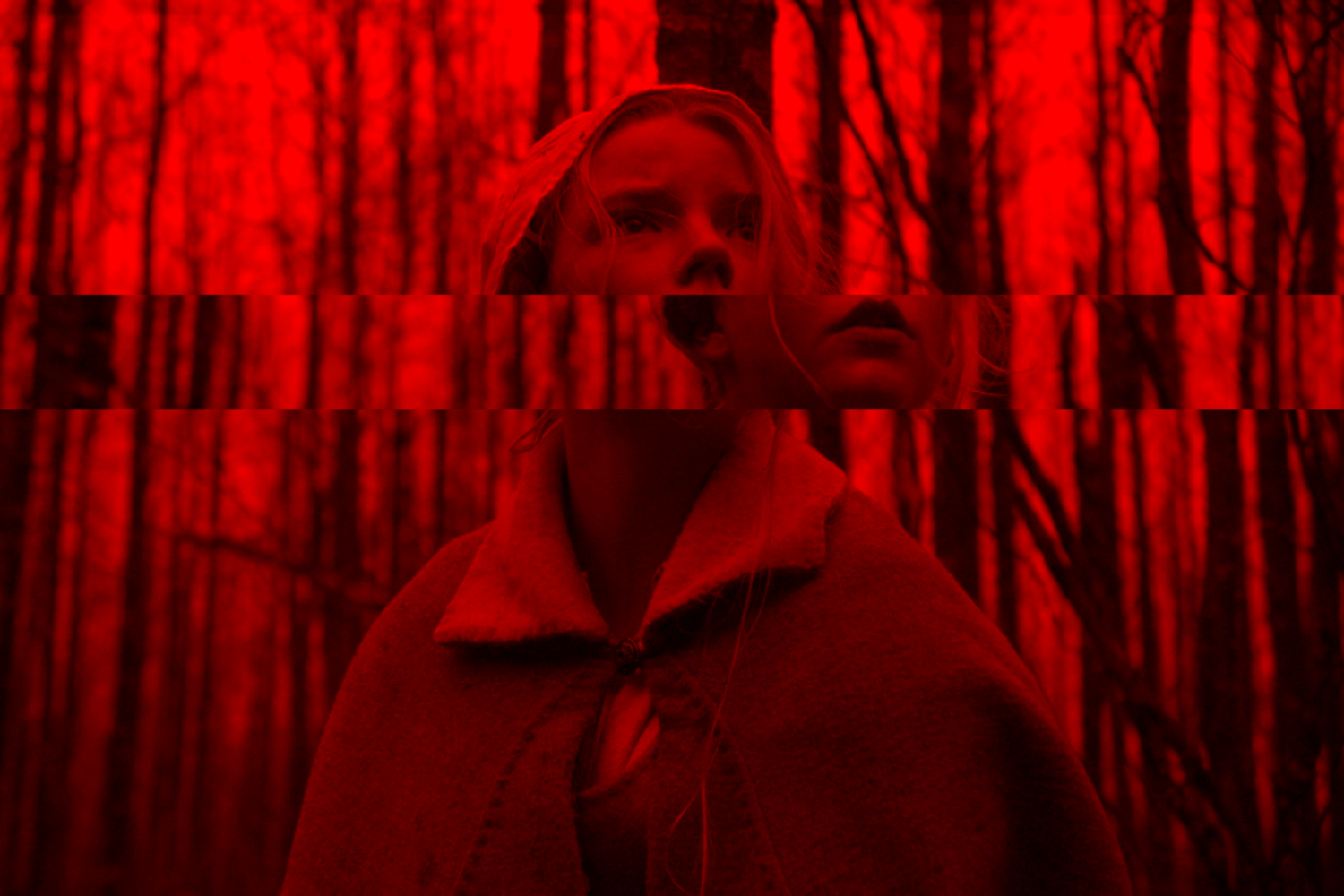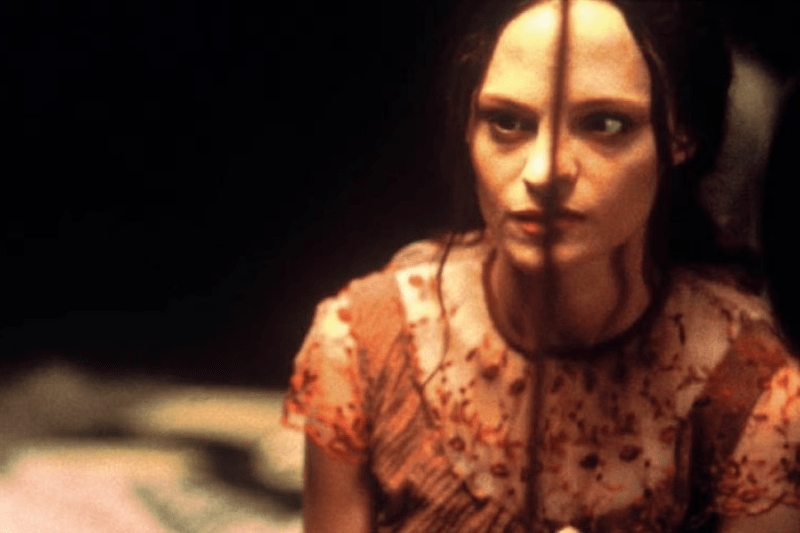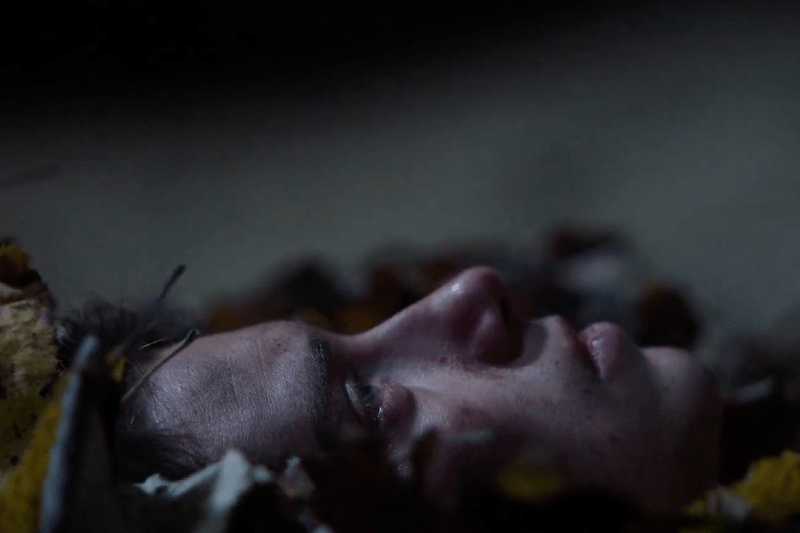Editorials
‘The Witch’ Puts Coven Before Blood
April 6th, 2021 | By Molly Henery

In a genre typically considered “for the guys,” it’s time to give a nod to the ladies. Uterus Horror is a subgenre of horror films that focuses on the uniquely female experience of puberty and the act of coming into your sexuality, using horror elements to emphasize and/or act as a metaphor for that experience. These films are often ignored in theaters but quickly develop cult followings. Columnist Molly Henery, who named and defined the subgenre, tackles a new film each month and analyzes how it fits into this bloody new corner of horror. This week, we take a look at Robert Eggers‘ The Witch.
Just a few short weeks ago, we got all lovey-dovey discussing Spring as a Uterus Horror film. Now it’s time to give you delightful readers a bit of whiplash, because we’re diving into a film that has absolutely no love in it, but a whole lot of puberty. That’s right, we’re talking about The Witch. While this puritanical slow-burner has been polarizing in the horror film community, there is no doubt it is an achievement in Uterus Horror filmmaking.
If you’ve been following my Uterus Horror column from the beginning, you might remember my first entry on Fangoria (back when they had their online content last year) that covered Carrie. In that article, I not only discussed how Carrie is the first true Uterus Horror film, but I also examined how religion factored into the titular character’s demise. Many of those themes in Carrie can also be found in The Witch—but what makes this New England folktale especially interesting is how it presents these themes within a single family unit, allowing viewers to examine everything under a microscope.
The first film from writer-director Robert Eggers (The Lighthouse), The Witch follows a family during the early 1600s. Their Christian values are so extreme that the community elders kick them out of the settlement where they lived. This period piece then takes a turn into pastoral folk horror as the family decides to venture into the wilderness and fend for themselves. It is in their new homestead when the focus turns to young Thomasin (Anya Taylor-Joy). She is old enough to be sexually mature, but young enough to not be married or have children. This means, as things at the homestead quickly go from bad to worse, Thomasin is blamed.
There are three women in this family: Thomasin, her little sister Mercy (Ellie Grainger), and their mother (Kate Dickie). Together they represent the different stages of life for women, along with how they are perceived at these stages in a traditional Christian family construct. Mercy is a child. Even when she is being a malicious little brat, she is still considered innocent because of her age, which also effectively makes her sexless and worthy of protection. On the opposite end of the spectrum, the mother is older, married, and has given birth to five children. She is shown as a woman who has done what she was born to do; become a mother and care for her husband and kin.
Thomasin is either just beginning to experience puberty or she is right in the thick of it, as evidenced by her budding curves. We even get a glimpse of her older brother, Caleb (Harvey Scrimshaw), checking out those curves because she is the only sexually mature girl there for him to look at. She’s no longer viewed as an innocent child, but she hasn’t started her journey as a wife and mother either. Unfortunately for Thomasin, this means she is the only woman who is associated with sexual desire, as Mercy is too young and their mother is “too old.”
Obviously, the mom isn’t really too old to be sexy, but in the context of how women are represented in The Witch, she is. Within the perspectives of puritanical Christian views, this makes Thomasin dangerous. Not only is her very sexuality threatening to their beliefs, but the simple fact that she has likely bled connects her to sin. Being looked upon as a sinner means she is no longer afforded the love and protection we see given to the other children, who are all either younger or male. This allows the rest of the family to easily associate all the evil they have experienced with this innocent adolescent woman.
It’s interesting to note that these roles for women are not placed on the male characters. There are men of similar age juxtaposed next to all the women in the family. While it is obvious the women have very specific roles and expectations depending on the stage of life they are in, the men simply get to exist. They gain more responsibilities as they get older, which is expected, but their age and sexual maturity doesn’t necessarily dictate how they are viewed by those around them. They are always honored just for being men. Especially with Caleb, who is assumed to be about the same maturity as Thomasin. He is loved and respected in a way that Thomasin never experiences from her family. This juxtaposition helps to build a stark and startling contrast of gender roles.
Thomasin is quickly blamed for every wrong that happens to her family for no other reason than she is a young woman. When the baby is taken while under Thomasin’s watch, she is held responsible even though the baby was taken by a witch. When the witch takes Caleb, curses him, and he returns home only to die, the family accuses Thomasin of being a witch and cursing her own brother. By the end of the film, as the family is thrown into chaos and bloodshed, every single member of the family believes Thomasin is the source of their misfortune. This is especially evident in how the mother treats her daughter.
Much like the relationship between Carrie and her mother, Thomasin wants nothing more than her parent’s approval. Yet her mother is emotionally incapable of giving that love now that Thomasin has gone through puberty. The two main reasons for this are because she looks at her daughter as the embodiment of sin now that she has bled and, in a more primal way, as sexual competition because she is the only other woman of child-bearing age. In fact, the only family members who are kind to Thomasin are Caleb and, to a lesser extent, her father (Ralph Ineson). Although the father has to mask his kindness in order not to upset the mother. As mentioned, Caleb dies after being cursed by the witch, and their father turns on Thomasin by the end of the film.
While many aspects of Thomasin’s Uterus Horror story are similar to Carrie’s, especially the influence of extreme religious views and the relationship between mother and daughter, the end of Thomasin’s story is in many ways a happier one. Yes, her entire family dies horrible deaths, but Thomasin is left alive. It is at this point she meets someone—Black Phillip (aka The Devil)—who sees Thomasin for the person she really is. In this story, religion and outdated, sexist, patriarchal views are the true evil despite the involvement of the witch and the devil. Black Phillip serves as Thomasin’s savior, and after her family betrays her, Black Phillip steps in to give Thomasin everything she desires.
Black Phillip’s allure is that he isn’t judging Thomasin or trying to change her. He doesn’t expect Thomasin to conform to the narrow-minded views of what society thinks a young woman should be. Another part of this allure is joining a coven of women who are powerful and independent. By signing his book and joining the coven of witches, Thomasin is freed from the confines of her family’s puritanical hold. She is finally given the space to be the person she wants to be and to live the life she chooses for herself. Thomasin is now surrounded by other women who will support her in her endeavors. When we see Thomasin floating into the air with these women, it is meant to be the physical manifestation of her finally breaking free of those shackles and reaching her full potential.
Thomasin’s journey throughout The Witch is a prime example of Uterus Horror. In the most basic terms, it is a film that uses a small family unit to show the different stages of womanhood and how women are perceived at each stage, with a particular focus on the sometimes harsh changes of puberty. Even before outside satanic influence comes into play, we see how Thomasin is cruelly treated by those in her family—this is what makes the end of the film so satisfying. Thomasin is finally free of the restraints inflicted by her bloodline, and she joins a new family (or coven) of women who truly accept her. As the final shot of the film shows, women are at their most powerful when they are their authentic selves and supported by those around them.
Visit our Editorials page for more articles like this. Ready to support more original horror criticism? Join the Certified Forgotten Patreon community today.



